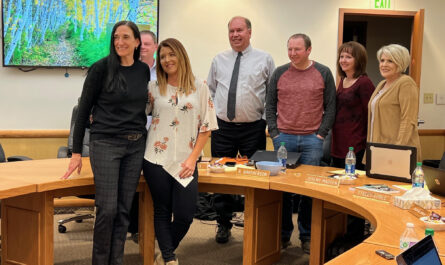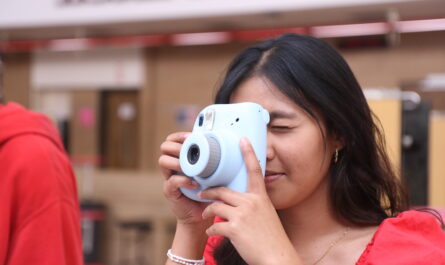The bell has rung, the doors are closed, and custodians begin their nightly cleaning routine, preparing for the next
day. Classes have been out of session for several hours, but the school is far from empty.
In the gym and on fields, teams are hard at work, practicing, getting ready for their next game. In the auditorium, the drama department is busy rehearsing, preparing for opening night. Behind closed classroom doors, clubs meet, planning and organizing activities.
For most students, school is over, but for some, it is only just beginning.
This year, of the 734 students currently enrolled at NS, about 57 percent are involved in at least one extracurricular activity. Beyond that, about 29 percent of students are involved in two or more extracurricular activities. This is actually on par with the national average, according to a 2014 study by the US Census Bureau.
Bill Pollock, a teacher, and coach at NS, believes that being involved in extracurricular activities is important for students and that it gives them a chance to connect to their school.
“I think it gives them an identity, and that’s kind of the whole goal of this organization,” Pollock said. “As a high school, we want to have an identity; we want to represent our community. So when they can be a part of that, I think it helps them connect to that.”
In his four years of teaching, Pollock has been able to see that extracurricular activities can teach students lessons that normal teaching in the classroom can’t.
“There’s a lot of things that you learn inside of an activity,” Pollock said. “I just recently went to the play, look how much time those kids spent practicing to perform, and that’s kind of the idea behind [extra curricular activities]. Whether it’s sports or clubs or whatever, the lessons are great. Committing to something, putting in the work, and the reward is being able to perform.”
Jada Bailey, a junior at NS, plays volleyball and softball, and she says that playing sports helps her connect to the school through her teammates. “[Extracurricular activities] just help you to get to know them better as people and as teammates and as athletes,” Bailey said. “I feel like the connection that you make with them, not even just as teammates, but as friends and people, is more important than the sport itself. I feel like that bond
and connection that you make is the main reason why it’s even fun.”
Aside from connecting with her teammates, being involved in athletics also helps Bailey feel more connected
to the community.
“At our games, when everyone comes to watch, I feel like it really brings the community together, and being a part of that is really cool,” Bailey said.
But it’s not just sports that help students connect; other types of extracurricular activities such as band and drama also help students feel connected to the school and community. Alex Barlow, the drama teacher at NS, says that being part of the drama program helps students feel more connected because of the time and energy that they put into it.
“I think [drama] helps kids get more connected to the school because it requires a lot of work and sacrifice on their part, to be part of a program that’s part of the school,” Barlow said. “I think it also helps them become more connected to the school because they are here, at the school, a lot.”
Beyond feeling more connected to the school, studies have also shown that students who are more involved in their school also tend to do better in school overall.
“It was revealed that students who participate in extracurricular activities are three times more likely to have a grade point average of a 3.0 or higher. This is higher than students who did not participate in extracurricular activities. This is regardless of their previous background or achievement. Students that participate in extracurricular activities also showed positive changes in students’ self-confidence, teacher perception, and greater confidence, and then developed positive school-related adult attachments. Extracurricular activities increase a student’s connection to school, raise their self-esteem, and positive social natures,” according to a 2011 study by Erin Massoni of the College of DuPain.
This trend holds true for NS, where the average GPA for students who are involved in any type of extracurricular activity is 3.34, while the average for students who aren’t involved is 2.34. Bailey says that she sees this in her own life.
“When I do play a sport, during that season, I’m always a better student just because I know that I have games that I need to get to and practice. So it makes me want to get my schoolwork done early and more on time so that I have time to play the sport,” Bailey said. “ It just helps me to stay on time and get things done.”
Barlow says that he too has been able to see improvements in both students’ grades and overall well-being because of involvement in school.
“They become connected to the program in more ways than I think just being in a class would. I notice that kids in extracurriculars, at least in the play, work a lot harder than they do in the actual classes and I think it’s because I care more, and they’re more invested in what they’re doing,” Barlow said. “I think many kids that I know of, that if they didn’t do [drama] or they didn’t do another extracurricular or something that they just would, fall off the deep end and just
not care. For some kids, it’s the only reason they come to school.”
Extracurricular activities help students make connections with the school, with their peers and with the community as a whole. These connections last far beyond graduation and help students feel like they are a part of something bigger than themselves.
“Continually I see kids that have always felt like they don’t fit in anywhere all of a sudden find somewhere that they do fit in,” Barlow said. “I think it’s, in terms of connection or success in high school, important for students to fit in somewhere. It doesn’t matter where that is, but I think that every student needs a place.”



